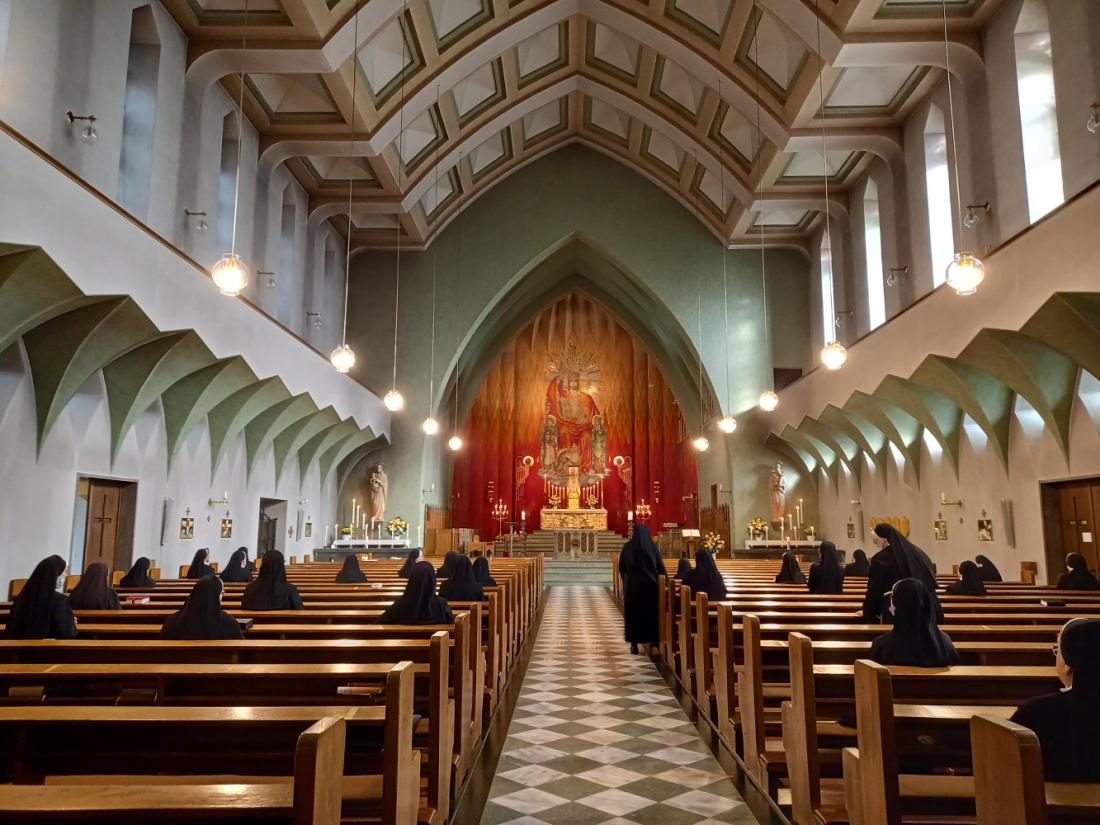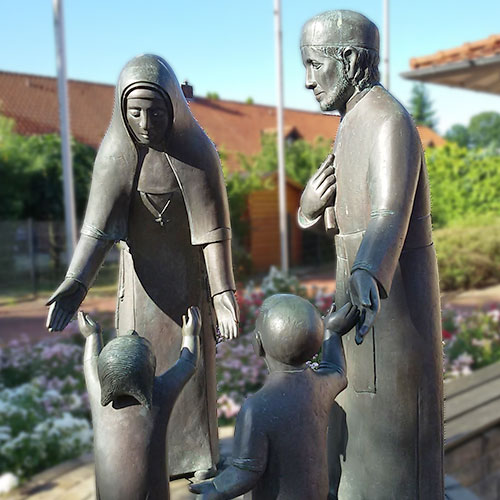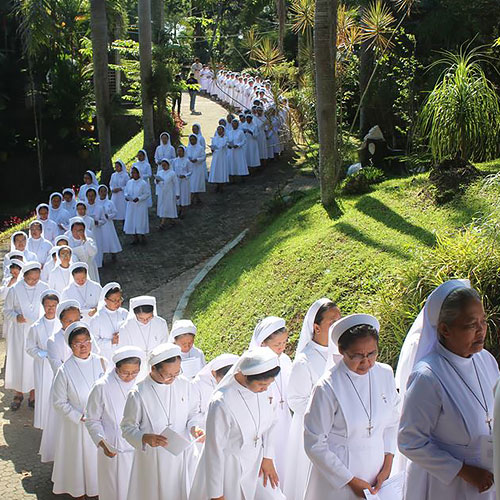After the first convent church built in 1881, today's St. George's Chapel, soon proved to be too small, Christ the King Church was built in 1928/1929 and consecrated on July 25, 1929 by the then Nuncio Pacelli, later Pope Pius XII.
The church interior is clearly divided by form and color into: Nave (gray), sanctuary (green) with celebration altar and choir stalls, and back sanctuary (red) with sacramental altar and a mosaic painting filling the north wall depicting Christ as King.
The basic concept of the church expresses the life journey of man from entrance into the world (main portal) to the glory of heaven (enthroned Christ with angels and saints). In the gray of everyday life, light falls from above, where the green of hope prevails. The lancet-shaped windows each bear in the upper part the image of saints with whom our community has a special relationship.
The path to the goal of Jesus Christ is accompanied at eye level by Stations of the Cross. They make us aware that Christ walks with us "through cross and suffering" the ordinary way to the glory of perfection.ht.
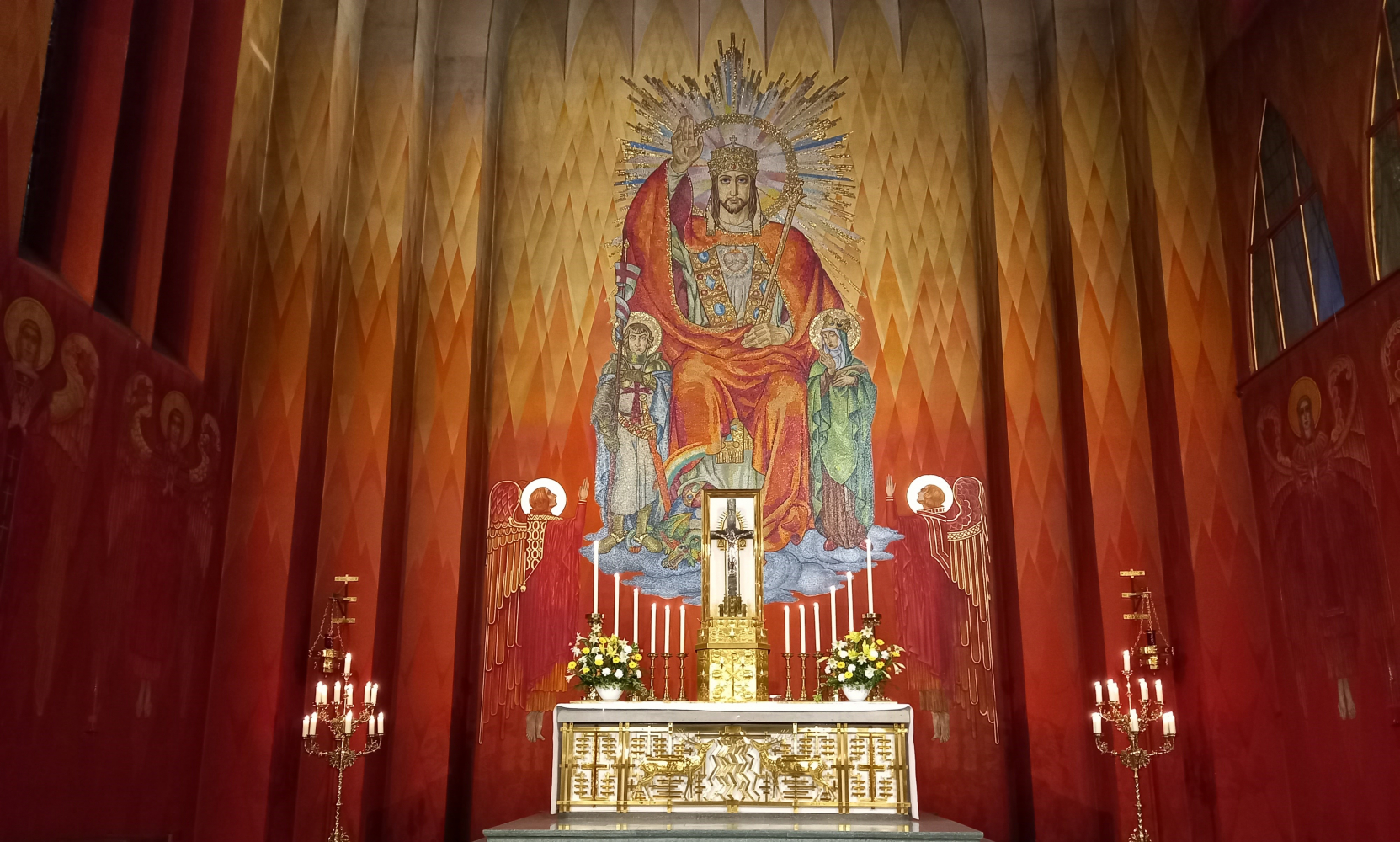
north wall and the vaulting are painted in a fire-tongue-like diamond pattern of glowing colors, dark red at the bottom and lighter to golden yellow at the top. In the midst of the blazing colors, Christ shines as king with his right hand raised in blessing, with the insignia of his kingship and priesthood, and with a heart burning with love.
St. George (patron saint of the Thuine parish church) and St. Elizabeth (first German Franciscan Tertiary) are on his right and left.
(Mosaic of 130,000 small stones, over 500 color gradations, 8 m / 26.25 feet high, 3.75 m / 12.3 feet wide by Georg Poppe)
Three features identify it as a monastic church:
A monastic church is at the service of a religious community especially dedicated to the praise of God. The choir stalls in the sanctuary indicate the Liturgy of the Hours, which is prayed by priests and religious in the name of the Church.
It lacks a baptismal font; instead, above the main doorway is a stained-glass window commemorating Jesus' baptism (Lk 3:21-22), when the Holy Spirit descended on Him in the form of a dove "and a voice from heaven said, You are my beloved Son; with You I am well pleased." Religious live in the conviction of their baptismal vows. Their profession is rooted in baptismal consecration.
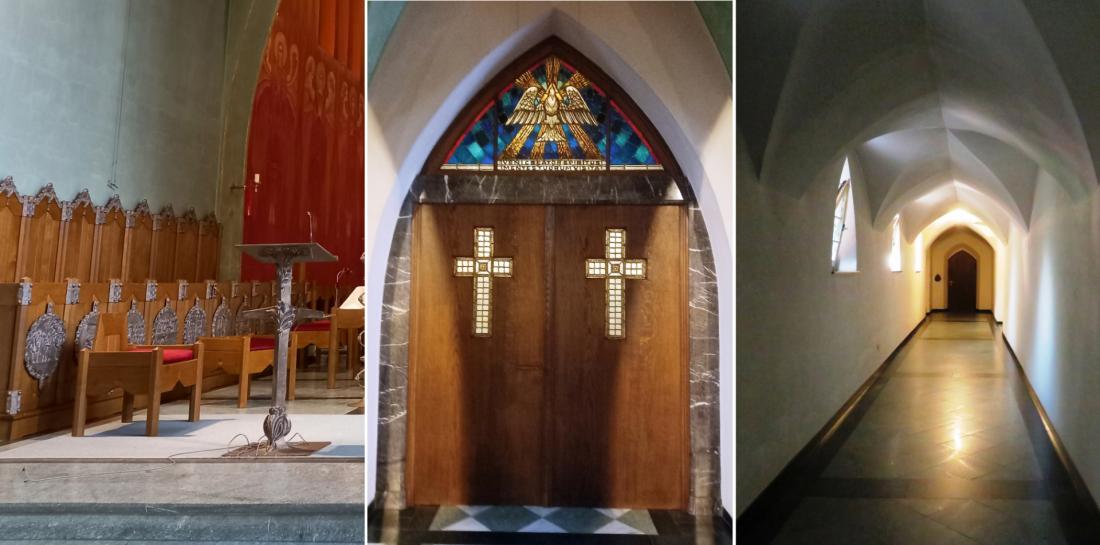
A third feature indicating a monastic church is the portico on the long sides of the church, which is comparable to the cloister of old monastery churches. To the east it leads to the sacristy, to the west to the adoration chapel. Here the Most Holy Sacrament is exposed for adoration day and night. Since July 25, 1953, two sisters have been praying here 24 hours a day in the intentions of the world, the Church, our religious community and the people who ask for our prayers.Here in the place where our congregation was founded, we gather four times a day in the motherhouse church for the Liturgy of the Hours, in which we participate in the divine praise of the Church. It is the prayer that Christ, united with the Church, addresses to the Father to give Him thanks for everything. Together with all priests and religious, we sing the praises of God and bring the world before God so that He may sanctify it.
Here in the motherhouse church, we celebrate the Eucharist together every morning and draw strength from it for our daily ministry. For the sisters in Germany, this is also the church where they experience all the important stages of their religious life:
Here they receive the religious habit in the celebration of investiture and are thus received into the community.
Here at the steps of the sanctuary they make their profession and commit themselves to a life according to the Gospel.
Here in the sanctuary, at perpetual profession, they lie stretched out on the floor during the invocation of all the saints before taking vows forever and binding themselves definitively to Christ and to the community.
For the golden and diamond jubilees, the jubilarians participate in the celebration of the Divine Liturgy from the choir stalls in the sanctuary.
Last but not least, we say goodbye to our deceased sisters here in the church. During the Funeral Mass, the coffin is placed here in front of the altar before the sister finds her final resting place in our convent cemetery.
Christ the King Church - Mother church of the worldwide religious community
From this church the missionaries are sent out to the mission areas.
When missionaries come to spend time at the motherhouse or when sisters from our foreign provinces visit us, all the sisters first go with them from the reception at the motherhouse entrance to the church and sing the Te Deum.
In addition, every sister of our Congregation (also abroad) knows about our Adoration Chapel, where two sisters adore day and night, imploring God's blessing for all the people with whom and for whom we live.
Leading into this chapel is a lattice door made of brass profiles, showing 12 scenes from the life of St. Francis in silhouette-like detail. In his footsteps, our sisters throughout the world try to follow Christ in a life according to the Gospel and to make his merciful love visible.

